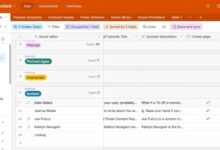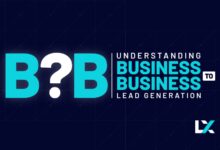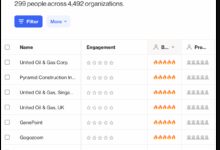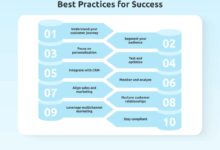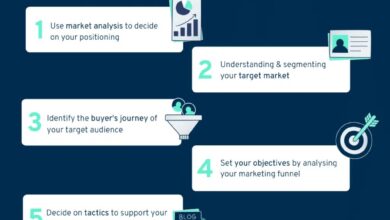B2B Growth Platform: 7 Powerful Strategies to Skyrocket Revenue
In today’s hyper-competitive B2B landscape, a smart growth strategy isn’t optional—it’s essential. Enter the b2b growth platform: your ultimate engine for scaling smarter, faster, and with precision.
What Is a B2B Growth Platform and Why It Matters

A b2b growth platform is more than just software—it’s a strategic ecosystem designed to align sales, marketing, and customer success teams around measurable business expansion. Unlike traditional tools that focus on isolated functions, a true b2b growth platform integrates data, automation, and intelligence to drive predictable, scalable revenue growth.
Defining the Modern B2B Growth Platform
Gone are the days when growth was driven by gut instinct or siloed departments. Today’s b2b growth platform combines CRM capabilities, marketing automation, analytics, AI-driven insights, and customer engagement tools into a unified system. Think of it as the central nervous system of your revenue operations.
- Integrates data from multiple touchpoints (website, email, social, CRM)
- Automates lead scoring and nurturing workflows
- Provides real-time analytics for performance tracking
According to Gartner, companies leveraging integrated growth platforms see up to 35% higher YoY revenue growth compared to those relying on fragmented tools.
How It Differs From Traditional CRM or Marketing Tools
While CRMs like Salesforce or HubSpot are foundational, they often lack the end-to-end orchestration needed for holistic growth. A b2b growth platform goes beyond contact management by embedding growth science into every stage of the customer journey.
- CRM: Tracks interactions and manages relationships
- Marketing Automation: Sends campaigns and scores leads
- B2B Growth Platform: Orchestrates go-to-market strategy, predicts outcomes, and optimizes performance across teams
“A b2b growth platform doesn’t just record what happened—it tells you what to do next.” — Forrester Research, 2023
The Core Components of a High-Performance B2B Growth Platform
To deliver real impact, a b2b growth platform must be built on robust, interconnected components. These aren’t just features—they’re strategic levers that drive measurable outcomes.
Integrated Data Infrastructure
Data is the lifeblood of any growth initiative. A powerful b2b growth platform unifies data from disparate sources—CRM, web analytics, ad platforms, customer support, and even third-party intent data providers like 6sense or Gombi.
- Creates a single source of truth for customer behavior
- Enables real-time personalization at scale
- Supports predictive modeling for lead conversion
Without clean, connected data, even the most advanced AI tools can’t deliver accurate insights. Platforms like Segment or RudderStack are often used as data pipelines to feed this infrastructure.
AI-Powered Lead Intelligence and Scoring
Traditional lead scoring models rely on static rules—job title, company size, page views. But modern b2b growth platforms use machine learning to analyze behavioral patterns, engagement velocity, and firmographic fit to predict which accounts are sales-ready.
- Identifies anonymous website visitors through IP and technographic matching
- Tracks engagement across channels (email opens, content downloads, video views)
- Assigns dynamic scores that update in real time
For example, Demandbase uses AI to power its Account-Based Experience (ABX) platform, helping companies like Adobe and IBM prioritize high-intent accounts.
Automated Campaign Orchestration
Manual campaign management doesn’t scale. A b2b growth platform automates multi-channel outreach across email, LinkedIn, display ads, and even direct mail—coordinating touchpoints based on user behavior.
- Triggers personalized email sequences when a lead downloads a whitepaper
- Launches retargeting ads when a visitor abandons a pricing page
- Notifies sales reps when an account shows buying signals
Tools like Outreach and Salesloft integrate seamlessly into these platforms to power sales engagement at scale.
How a B2B Growth Platform Transforms Sales and Marketing Alignment
One of the biggest challenges in B2B companies is the disconnect between marketing and sales. Marketing generates leads, but sales often deems them “not qualified.” A b2b growth platform bridges this gap with shared metrics, visibility, and accountability.
Shared Goals and Metrics Across Teams
When both teams operate from the same platform, they can align around common KPIs like:
- Marketing Qualified Leads (MQLs)
- Sales Accepted Leads (SALs)
- Opportunity Creation Rate
- Customer Acquisition Cost (CAC)
This transparency reduces finger-pointing and fosters collaboration. According to a CMO Council report, companies with aligned sales and marketing see 36% higher customer retention and 38% higher sales win rates.
Real-Time Feedback Loops
A b2b growth platform enables continuous feedback between teams. For instance:
- Sales can flag leads as “not a fit,” and the system learns to adjust future lead scoring
- Marketing sees which content drives the most pipeline and doubles down on what works
- Customer success shares expansion signals that trigger upsell campaigns
This closed-loop system turns growth into a self-optimizing engine rather than a series of disjointed efforts.
Account-Based Everything (ABX) Enablement
Modern B2B growth platforms are built for Account-Based Marketing (ABM) and its evolution: Account-Based Experience (ABX). Instead of blasting messages to thousands, you engage key accounts with hyper-personalized journeys.
- Identify target accounts using firmographic, technographic, and intent data
- Orchestrate multi-touch, multi-channel campaigns tailored to each account
- Measure engagement at the account level, not just individual contacts
As ABM Leadership Alliance notes, 87% of marketers using ABX report higher ROI than traditional demand gen.
Leveraging Data and Analytics in Your B2B Growth Platform
Data isn’t just collected—it’s weaponized for growth. A mature b2b growth platform turns raw data into actionable intelligence through advanced analytics and visualization.
Real-Time Dashboards and Performance Tracking
Leaders need instant visibility into what’s working. Real-time dashboards show KPIs like:
- Pipeline velocity
- Conversion rates by stage
- Content engagement heatmaps
- Channel performance (organic, paid, social)
Platforms like Tableau or Looker integrate with growth platforms to deliver executive-level insights without requiring SQL queries.
Predictive Analytics for Forecasting
Instead of guessing next quarter’s revenue, predictive analytics models use historical data and machine learning to forecast outcomes with high accuracy.
- Predict which leads will convert based on behavioral patterns
- Estimate deal closure probability for each opportunity
- Simulate the impact of changing pricing or messaging
Companies like InsideSales use AI-driven forecasting to help sales teams prioritize high-probability deals.
Attribution Modeling to Understand What Drives Results
Which channel deserves credit when a deal closes? First-touch? Last-touch? Multi-touch? A b2b growth platform uses attribution modeling to answer this.
- Linear attribution: evenly distributes credit across all touchpoints
- Time decay: gives more weight to recent interactions
- Data-driven attribution: uses algorithms to assign value based on actual influence
Google Analytics 4 and platforms like Windsor.ai offer robust attribution integrations for B2B marketers.
Top B2B Growth Platforms in 2024: Features and Comparisons
Not all b2b growth platforms are created equal. Some excel in AI, others in integration or ease of use. Here’s a breakdown of the top contenders.
Demandbase: The ABX Powerhouse
Demandbase leads the pack in Account-Based Experience, combining AI-driven intent data, ad targeting, and sales engagement.
- Strengths: Strong ABM orchestration, real-time intent signals, robust reporting
- Best for: Mid-market to enterprise B2B tech companies
- Integration: Salesforce, Marketo, LinkedIn, Google Ads
Learn more at demandbase.com.
6sense: Revenue AI for Predictive Insights
6sense uses its Revenue AI engine to uncover anonymous buyer activity and predict conversion likelihood.
- Strengths: Deep intent data, predictive scoring, market insights
- Best for: Companies with complex sales cycles and long consideration phases
- Integration: HubSpot, Salesforce, Outreach, ZoomInfo
Visit 6sense.com to explore their platform.
HubSpot + Operations Hub: Scalable Growth for SMBs
While HubSpot started as a marketing tool, its Operations Hub and CRM Platform now function as a full-fledged b2b growth platform for small to mid-sized businesses.
- Strengths: Affordable, user-friendly, extensive app marketplace
- Best for: Startups and growing SaaS companies
- Integration: Over 1,000 apps including Slack, Zoom, and Stripe
Check it out at hubspot.com.
Implementing a B2B Growth Platform: A Step-by-Step Guide
Adopting a b2b growth platform isn’t just a tech upgrade—it’s a transformation. Follow this roadmap to ensure success.
Assess Your Current Tech Stack and Gaps
Start by auditing your existing tools. Are you using 10 different platforms with no integration? Do you have data silos? Identify where friction exists.
- Map your customer journey from awareness to advocacy
- List all current tools and their primary functions
- Identify missing capabilities (e.g., intent data, predictive scoring)
A tool like Vendemio can help visualize your martech stack and integration health.
Define Clear Growth Objectives
What do you want to achieve? More leads? Faster sales cycles? Higher customer retention? Your goals will dictate which platform features matter most.
- Short-term: Increase MQLs by 40% in 6 months
- Mid-term: Reduce CAC by 25%
- Long-term: Achieve 90% account penetration in target segments
Align these goals with executive stakeholders to secure buy-in.
Choose the Right Platform and Onboard Strategically
Don’t rush the selection. Evaluate platforms based on:
- Integration capabilities with your CRM and existing tools
- Scalability for future growth
- Customer support and training resources
Once selected, onboard in phases. Start with a pilot group (e.g., one sales team or product line) before rolling out company-wide.
Train Teams and Foster Adoption
Even the best b2b growth platform fails if people don’t use it. Invest in training and change management.
- Host weekly workshops and Q&A sessions
- Create internal champions in each department
- Link platform usage to performance metrics
According to McKinsey, companies with strong adoption see 2.5x faster ROI from their growth platforms.
Measuring Success: KPIs That Matter for Your B2B Growth Platform
How do you know your b2b growth platform is working? Track these key performance indicators.
Pipeline Growth and Velocity
Monitor how quickly opportunities move through your funnel. A healthy platform should increase both volume and speed.
- Monthly pipeline generation (total deal value)
- Average days in each sales stage
- Conversion rate from lead to opportunity
Target: Reduce sales cycle length by 15–20% within 12 months of implementation.
Customer Acquisition Cost (CAC) and ROI
Track how much you spend to acquire a customer versus the revenue generated.
- CAC = Total sales & marketing spend / Number of new customers
- Compare CAC to Customer Lifetime Value (LTV)
- Calculate platform ROI: (Revenue influenced by platform – cost) / cost
Benchmarks: LTV:CAC ratio should be at least 3:1 for sustainable growth.
Engagement and Adoption Rates
Internal usage is just as important as external results.
- Percentage of sales reps using the platform daily
- Number of automated workflows active
- Marketing campaign execution speed
Low adoption? Revisit training and leadership alignment.
Future Trends Shaping the Evolution of B2B Growth Platforms
The b2b growth platform isn’t static. Emerging technologies and market shifts are redefining what’s possible.
AI and Generative AI Integration
AI is no longer optional. Future platforms will use generative AI to:
- Write personalized email copy in seconds
- Generate dynamic landing pages based on visitor profile
- Summarize call transcripts and suggest next steps
Tools like Jenni and Copy.ai are already being embedded into growth workflows.
Increased Focus on Privacy and Compliance
With GDPR, CCPA, and evolving consent laws, platforms must balance personalization with privacy.
- Zero-party data collection (data users willingly share)
- Consent management platforms (CMPs)
- On-premise or private cloud deployment options
Expect more platforms to adopt privacy-by-design principles in 2024 and beyond.
Expansion into Customer Success and Retention
Growth isn’t just about acquisition. The next frontier for b2b growth platforms is retention and expansion.
- Predict churn risk using behavioral signals
- Trigger upsell campaigns when usage spikes
- Automate onboarding and adoption nudges
Platforms like Gainsight are merging with growth stacks to create end-to-end customer lifecycle management.
What is a b2b growth platform?
A b2b growth platform is an integrated software ecosystem that combines data, automation, AI, and analytics to drive scalable revenue growth. It aligns sales, marketing, and customer success teams around shared goals and provides tools for lead generation, account-based marketing, predictive analytics, and performance tracking.
How does a b2b growth platform improve sales and marketing alignment?
It creates a shared source of truth, aligns teams around common KPIs, enables real-time feedback, and automates coordinated campaigns. This reduces friction, increases accountability, and improves conversion rates across the funnel.
What are the key features to look for in a b2b growth platform?
Key features include integrated data infrastructure, AI-powered lead scoring, multi-channel campaign orchestration, real-time analytics, attribution modeling, CRM integration, and scalability. Support for account-based strategies and customer retention is increasingly important.
Which industries benefit most from a b2b growth platform?
B2B tech, SaaS, financial services, healthcare IT, and professional services benefit the most due to complex sales cycles, high customer lifetime value, and the need for precise targeting and personalization.
How long does it take to see ROI from a b2b growth platform?
Most companies see initial improvements in lead quality and team alignment within 3–6 months. Full ROI, including pipeline growth and reduced CAC, typically takes 9–18 months, depending on implementation speed and team adoption.
Implementing a b2b growth platform is no longer a luxury—it’s a strategic imperative. From unifying data and aligning teams to leveraging AI and predictive analytics, these platforms empower B2B companies to grow with precision and scale. The future of B2B growth lies in integration, intelligence, and continuous optimization. Whether you’re a startup or an enterprise, the right b2b growth platform can transform how you acquire, engage, and retain customers—driving sustainable, long-term success.
Further Reading:

